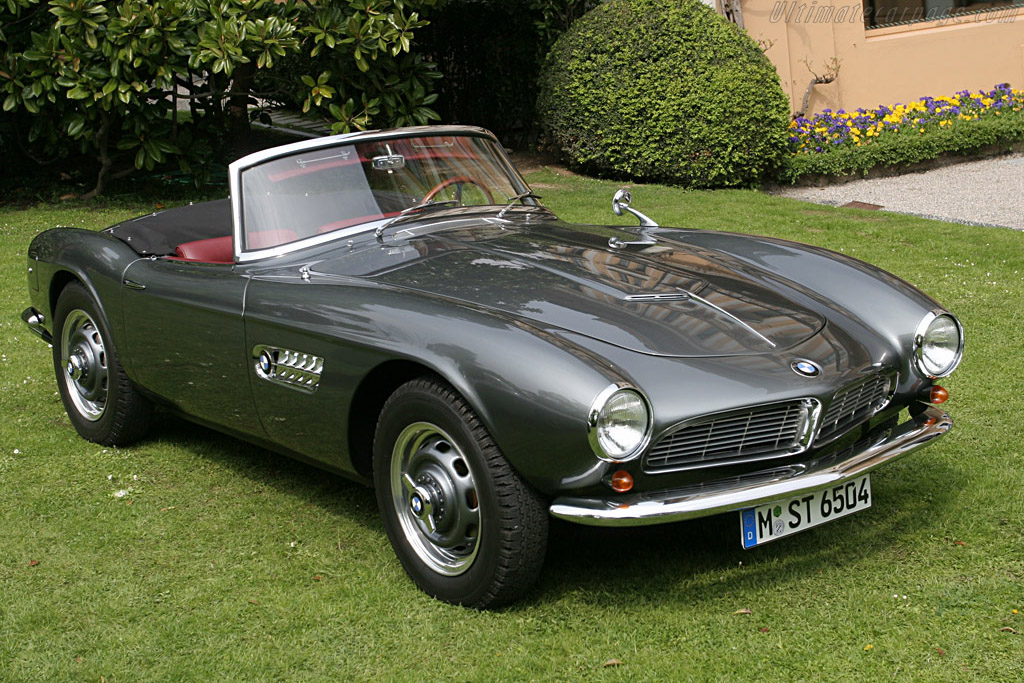507 Roadster 1956

The 507 Roadster, introduced in 1956, is one of the most iconic and celebrated models in the history of BMW. This elegant vehicle emerged as a symbol of luxury and performance, appealing to car enthusiasts and collectors worldwide. With its sleek design and powerful engine, the 507 Roadster quickly became a favorite among celebrities and automotive connoisseurs.
What makes the 507 Roadster so special? Its creation was driven by a desire to compete with American sports cars while maintaining the unique German engineering finesse. Designed by Albrecht von Goertz, the car exuded sophistication with its long hood, low stance, and curvaceous bodywork. Each detail of the 507 Roadster was meticulously crafted to offer an unparalleled driving experience.
The legacy of the 507 Roadster goes beyond its aesthetic appeal. Underneath its beautiful exterior lies a robust V8 engine that provided impressive performance for its time. Paired with advanced engineering and craftsmanship, this car represented BMW's commitment to innovation and excellence. As we explore various aspects of this legendary vehicle, we will uncover why it remains a beloved classic in the automotive world.
Design and Aesthetics
The design of the 507 Roadster is a testament to Albrecht von Goertz's vision and talent. The car’s proportions were perfectly balanced, giving it a timeless elegance that still captivates enthusiasts today. Its long hood and short rear deck create a sense of dynamism even when the car is stationary.
The interior was equally impressive, featuring high-quality materials and attention to detail. The dashboard was simple yet functional, with all controls within easy reach of the driver. Leather seats added a touch of luxury, making every journey comfortable and stylish.
One of the standout features of the 507 Roadster is its removable hardtop. This allowed drivers to enjoy open-air motoring or close it up for a more refined look. The combination of style and practicality made it a versatile choice for various driving conditions.
Despite its beauty, producing the 507 Roadster was an expensive endeavor for BMW. Each car was hand-built, which limited production numbers and contributed to its exclusivity. Today, these cars are highly sought after by collectors, often fetching high prices at auctions.
Performance and Engineering
Beneath the elegant exterior of the 507 Roadster lies a formidable V8 engine. This 3.2-liter powerplant produced around 150 horsepower, which was impressive for its time. It allowed the car to accelerate from 0 to 60 mph in approximately 11 seconds, offering thrilling performance for drivers.
The engine was paired with a four-speed manual transmission that provided smooth and precise gear changes. This setup ensured that drivers could fully exploit the car’s power while enjoying a connected driving experience.
The suspension system was another highlight of the 507 Roadster. It featured independent front suspension with torsion bars and a live rear axle with leaf springs. This configuration offered a comfortable ride without compromising handling prowess.
Braking performance was also noteworthy, thanks to hydraulic drum brakes on all four wheels. While not as advanced as modern disc brakes, they provided adequate stopping power for spirited driving.
Cultural Impact
The 507 Roadster quickly gained popularity among celebrities and influential figures during its production run. Elvis Presley famously owned one, further cementing its status as an icon of luxury and style. Other notable owners included Prince Rainier III of Monaco and John Surtees, a renowned racing driver.
This cultural significance extended beyond ownership; the car appeared in various films and television shows over the years. Its presence in popular media helped solidify its place in automotive history as one of BMW’s most memorable models.
The exclusivity of the 507 Roadster also contributed to its allure. With only 252 units produced between 1956 and 1959, it remains a rare gem in today’s classic car market. Collectors value these cars not only for their beauty but also for their historical importance.
Legacy and Influence
The legacy of the 507 Roadster continues to inspire modern automotive design at BMW and beyond. Its influence can be seen in subsequent models such as the Z8 roadster released in 2000—a modern interpretation that paid homage to its predecessor’s timeless design cues.
Furthermore, BMW has continued celebrating this heritage through various events such as Concours d’Elegance gatherings where pristine examples are showcased alongside other classic cars from different eras.
| Specification | Details |
|---|---|
| Engine | 3.2-liter V8 |
| Power Output | 150 HP |
| 0-60 mph | 11 seconds |
| Production Years | 1956-1959 |
| Total Units Produced | 252 |
Market Value Today
The rarity and historical significance of the 507 Roadster have made it a highly prized collector’s item in today’s market. Prices have steadily increased over time, with some pristine examples fetching millions at auctions worldwide.
A key factor influencing market value is originality; cars that retain their original components are more desirable than those extensively modified or restored using non-original parts.
Auction houses such as RM Sotheby’s have seen record-breaking sales for well-preserved examples—testament to enduring appeal among collectors who appreciate both beauty engineering excellence embodied by this classic model.
The BMW 507 Roadster remains an enduring symbol elegance performance within automotive world—its timeless design exceptional engineering continue captivate enthusiasts decades after production ceased The cultural impact legacy left behind by this model cannot overstated—from gracing driveways celebrities appearing silver screen influencing future generations designers engineers alike truly remarkable testament vision craftsmanship combined create something extraordinary stands test time
If you ever chance see one these magnificent machines person take moment appreciate artistry engineering represents glimpse into golden era motoring history